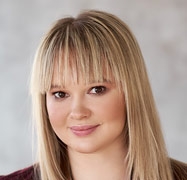Military tour in Russia
Overview
History Tour dedicated to the Victory in the Second World War
Our company organized the history tour devoted to the Victory in the Second World War ending. Having such a successfull experience in 2010 we decided to arrange this tour in honour of 70 Annivesary of the Victory in Second World War II.
During the tour you will visit the places of the most significant theaters of war which have changed not only war situation, but whole history of modern world. Moscow, Leningrad, Stalingrad – three hero cities, where Soviet people prevented the capture and defended the freedom and independence of their Motherland. The tour is specially dated at time of 70 anniversary celebration of the end of the Second World War, and we offer unique possibility to take part in celebration events, such as Parade on Red Square, holiday banquet with Heroes and Veterans of Great Patriotic War and grandiose salute.
Moscow has a right to be a "Hero City" since this city made a huge contribution to the victory in the Great Patriotic War and defeated of Nazi aggressors. The Battle of Moscow became a turning point of the Great Patriotic War. We will visit a Museum of Great Patriotic War where you will find a large collection of war relics, such as weapons, combat equipments and vehicles, uniforms, awards, photos, newsreel, real documents and letters and many others. The State Museum of Moscow Defense shows the history of the greatest event in Russian history - the Battle of Moscow 1941-1942. The exposition of museum, which keeps more than 4000 original exhibits, helps visitors to understand what helped to stop the best forces of the most powerful army near Moscow walls. Also we will visit two best military museums, devoted to legendary combat forces – the Tank Museum in Kubinka and the Air Forces Museum in Monino. Victory Parade took place in Moscow in 1945. The regiments consisting of Patriotic War heroes with its glorified commanders marched on Red Square. People warmly welcomed valorous soldiers. We give you great opportunity to feel atmosphere of victory and take part in Parade on the Red Square.
The other city of Stalingrad (the modern name Volgograd) protected southern boundaries of Soviet Union and is known for Stalingrad Battle, which was one of the bloodiest battle of the Second World War. The Fascist Troops suffered a devastating defeat in the battle of Stalingrad. There are several museums in Volgograd which devoted to Stalingrad Battle and we will visit most interesting of them, such as Mamaev Kurgan, Museum of Stalingrad Panorama, Soldiers’ Field, Collective Memorial Cemetery in Rossoshka village and others.
The “Hero City” Leningrad (the modern name St.-Petersburg) became a synonym of courage and heroism. Leningrad’s horrific siege was one of the most lethal in world history. It lasted for 900 days, from September 1941 to January 1944. The city’s civilian population of almost three million refused to surrender, even though they were completely surrounded. By the first winter of the siege there was no heating, no water supply, almost no electricity and very little food. Despite non-stop air and artillery bombardment, the city’s greatest enemies were hunger and bitter cold. Exhausted people collapsed and died. The streets were littered with dead bodies. The only life-line to the mainland was the ice of Lake Ladoga – known as the “Road of Life”. “Road of life” saved thousands human lives, we will visit Ladoga Lake. During tour in St. Petersburg we also will visit the Peter and Paul Fortress, Aurora Cruiser, the Artillery Museum, Marino Diorama and State Memorial Museum of Leningrad Siege and Defense.
This historic tour devoted to the 70 anniversaries of the Second World War ending will be interesting to Veterans of the World War II, descendants of participants of the war and to all who sure that we have to remember our history in order to not repeat the mistakes of the past.
Itinerary
| May 7 | Day 1 | |||
 St. Basil's Cathedral |
After arriving to Moscow airport you will meet with our English speaking representative. We will take you to hotel and help with hotel, accommodation. |
|||
| May 8 | Day 2 | |||
 Moscow View |
After breakfast at hotel our guide will pick you up at the hotel and take by comfortable tour bus (or mini bus depending on group) to Museum of Moscow Defense. Here you will know a lot about the Battle of Moscow 1941-1942. After that we will go to famous Tank Museum in Kubinka where you will see the unique, world's biggest collection of armored vehicles starting from WWI first constructions to modern main battle tanks. Collection was founded in 1931 and is still growing with new battlefield findings and army write-offs, with present-day count of more than 300 vehicles. Collection is displayed in seven hangars. Four of them are assigned to Soviet and Russian armor, split in Heavy, Medium. Light and Wheeled vehicles hangars, with total number of 130 exhibits. Among them you can see 5-turret giant T-35, legendary T-34, formidable "Josef Stalin" line, UFO-shaped experimental vehicles, "flying tank" T-80 and many others. Three other hangars represent the tanks from Germany, USA, Great Britain, Italy, Japan and other countries. We will be back to hotel around 19:00. |
|||
| May 9 | Day 3 | |||
 Victory Parade on Red Square |
After breakfast at hotel we will go to Victory Parade on Red Square. We will be among witnesses of this great event. The Victory Parade on the Red Square of Moscow is the central event of the Victory day in Russia. The Parade on the Red Square consists on two parts – the historical and the contemporary sections. Over 7,000 Russian servicemen dressed in the military uniform of WWII years march across the square in columns. The contemporary part of the military parade follows shortly. Modern units of the Russian army march across the square. After Lunch we will go to Museum of Great Patriotic War, which was opened on May 9 1995, and is located in the base of the Memorial Victory Complex on Poklonnaya Hill and covers more than 48.000 square meters. The Museum consists of the Entry Hall, the Halls of Glory and Memory, the Picture Gallery and six dioramas devoted to the most dramatic battles of the Great Patriotic War, two movie theatres, a hall for veterans' meetings and an exhibition hall. The military display acts as a chronicle of the war through official documents, letters (official and personal), newspaper articles, photographs and paintings. In the Hall of Memory there are show-cases containing books with the names of those who died. An automated search system is being installed to help visitors find information on these soldiers more easily. We invite you to have Holiday Dinner at the restaurant with Veterans and Heroes of Russia and Soviet Union. |
|||
| May 10 | Day 4 | |||
 Air Force Museum in Monino |
After breakfast at hotel we will check out from hotel and will go to Air Force Museum in Monino. The Central Museum of the Air Forces at Monino is located approximately 38 kilometers (24 miles) from Moscow and it is the largest and best aviation museum in Russia. Many of the Russian aviation Design Bureaus (Tupolev, Ilyushin, Antonov, Mikoyan, etc.) have contributed exhibits and resources to the museum and its maintenance.The aircraft are in surprisingly good shape and most are sitting on the original tires they landed at the Monino airfield with. This is a testament to the museum employees who have a great historical legacy to preserve. After lunch we will go to airport for departure to Volgograd. When we arrive to Volgograd we will meet with English speaking representative in airport and go to hotel for accommodation. After dinner at restaurant you will have free time. |
|||
| May 11 | Day 5 | |||
 Mamaev Kurgan in Volgograd |
After breakfast at hotel we will have Volgograd sightseeing tour “Hero City Volgograd” with visiting Mamaev Kurgan (incl. Square of Heroes, River side named after 62d Army and Pavlov’s House) Prevailing over the main part of the city, Mamayev Hill is marked on the maps as Height-102 and it was the main chain in the system of defense of the Stalingrad front. It also turned out to be the key position in the fight for the banks of the Volga. Fierce battles took place here during the last months of 1942. The ground of the hill was plowed up by bombs, missiles and mines. The soil got mixed together with the fragments of metal. This is the place of the numerous human losses… Right here, in the area of Mamayev Hill, on the 2nd of February of 1943 the Stalingrad Battle was finished. After Mamaev Kurgan we will visit Volgograd State Panoramic Museum. The composition of museum consists of the artistic panorama “The Defeat of Fascists Armies at Stalingrad” (the biggest pictorial canvas of Russia, the size of it is 16x120 m, square – 2000 sq.m. and 1000sq.m. of objective plan) and of the museum “Stalingrad Battle”, where there are 8 exhibition halls with more than 3500 exhibits, four dioramas (sized 5x25 m each), a unique portrait gallery of Soviet military leaders and commanders, who were taking part in Stalingrad battle. Museum funds contain more than 126 thousands of storage units of local, state and world importance. The funds are composed of unique collections of cold steel and fire-arms, materiel, documents, photographs, banners, posters and art works. After lunch at the restaurant we will continue the history tour and will have Tour to the monuments of Stalingrad battle (incl. combat ship “Gasitel” a monument to river workers of the Volga flotilla, tank T-34 which faces to the main checkpoint of F. Dzerzhinsky tractor factory, “Rodimcev’s Wall” and Soldiers Field). Later we will have dinner at the restaurant. |
|||
| May 12 | Day 6 | |||
After breakfast at hotel we will have Tour to Hydro-Electric Power Station which is located 20 km away from Volgograd city center to the north. Volzhskiy HEPS is first-rate hydraulic structure of Russia which supplies power to Central and Western regions of the industrial districts of Volgograd city. Red October Iron & Steel Metal Works, “Barricades” Oil Extracting Machinery Plant, Trakrtor Plant, Mechetka River – the places, which expressly testify to heroism of Stalingrad city defenders during the Stalingrad Battle. We will visit turbine house to meet specialists of the plant, visit Volzhskiy town founded by HEPS builders. After lunch we will visit Collective Memorial Cemetery in Rossoshka village. Later we will have dinner at the restaurant. |
||||
| May 13 | Day 7 | |||
After breakfast we will check out from hotel. We will have Volga Boat Tour where we can enjoy the beautiful view of the greatest river in Europe. After lunch at the restaurant we will go to airport for departure to St. Petersburg. When we srrive to St Petersburg we will meet with our English speaking representative, who take us to hotel and help with accommodation. We will have late dinner at the restaurant. |
||||
| May 14 | Day 8 | |||
 St. Petersburg View |
After breakfast at hotel we will go to the Museum of The Breakthrough of the Siege of Leningrad which is located on the southern shore of Ladoga Lake where severe battles for Leningrad took place in January 1943. We will spend whole day there and will have lunch in the museum area. Museum includes the Diorama museum near Marino, memorial complex "Nevsky Pyatachok (Patch)" in Kirovsk, monuments on the Sinyavinskie heights and the spot of initial meeting of the Russian fronts. Museum-Diorama "Breaching the Blockade of Leningrad" is located in the left bank ramp of the Ladozhsky bridge across the Neva River is the conceptual and decorative core of the reserve museum. It creates a grandiose representation of the combat with the inward bent background bar of the diorama presenting painted scenes of the battle and the near part showing three-dimensional objects. The diorama was designed by Leningrad artists, the war and battle veterans. The Nevsky Pyatachok (Patch), a small piece of land on the left bank of the Neva conquered from the Germans in September 1941, played an important role in the battle for Leningrad. Several attempts were made to break the siege here to come true only in January 1943. To glorify the participants and victims of those battles the memorial zone was created. The Border Stone is the heart of the memorial. The only hills in the area - the Sinyavinskiye Heights - played an important strategic role in army operations. It was in September 1943 that the Soviet forces headed by General Simonyak managed to recapture the Heights. Many Soviet soldiers who lost their lives in those battles lie here in common graves. Another memorial place - the site where units of the Volkhovsky front met those of the Leningradsky one on January 18, 1943 (in the swale not far from the Sinyavinskye Heights) is marked with a stele. This event meant the break of the siege of Leningrad. The legendary Road of Life across Ladoga Lake easily exposed to German fire was the only route connecting the city with the country. A branch of the Diorama museum "The Road of Life" is opened in the village of Kobona on the eastern coast of Ladoga. An obelisk was erected on Preobrazhenskaya Hill not far from Shlisselburg to commemorate those who built the Road of Victory railway and worked there. It was a branch line that was laid along the Ladoga coast after the break of the siege. Later in the evening we will have dinner at the restaurant. |
|||
| May 15 | Day 9 | |||
 Peter and Paul fortres |
After breakfast at hotel we will visit Peter and Paul fortress. It was founded by Peter the Great on a small island in the Neva delta on May 27, 1703 (May 16 according to the old calendar), which is now marked as St. Petersburg's City Day. From 1721, the fortress housed part of the city's garrison and also famously served as a high security political jail - among the first inmates was Peter's own rebellious son Alexei. More pleasantly, the Peter and Paul Fortress is home to the Peter and Paul Cathedral, a church where almost all the Russian Emperors and Empresses from Peter the Great to Nicholas are buried. The Cathedral was the first church in the city to be built of stone (in 1712-33). After that we will visit Aurora Cruiser. The historic Aurora is now a museum, it was built in St Petersburg in 1897-1900 and the Aurora saw active duty in the Russian - Japanese War of 1904-05. After the war the ship was used for personnel training and during the October Revolution of 1917 gave the signal (by firing a blank shot) to storm the Winter Palace. After lunch we will visit State Memorial Museum of Leningrad Siege and Defense where you will know a lot about both the military and the civilian aspects of the blockade. The displays running round the walls tell the story of the advance of the combined German and Finnish forces and their eventual repulsion by the Red Army through photographs, arms and the personal effects of soldiers of all nationalities. Of particular interest are several diaries kept by German officers and the newspaper articles chronicling the feats of Soviet snipers. The central displays document the even more harrowing civilian experience of the Blockade, and include a wealth of fascinating propaganda material (including anti-Bolshevik leaflets dropped by the Finns and the Nazis into the besieged city), a mock-up of a typical apartment interior of the time, an example of the pitiful daily bread ration (125 grams for a civil servant and his family), and numerous handwritten and drawn testaments to the privations and horrors of life under siege. Later in the evening we will have dinner at the restaurant. |
|||
| May 16 | Day 10 | |||
After breakfast at hotel we will check out from hotel and on the way to airport for departure will make one stop near Monument of Defenders of Leningrad and Pulkovo Heights. |
||||
























